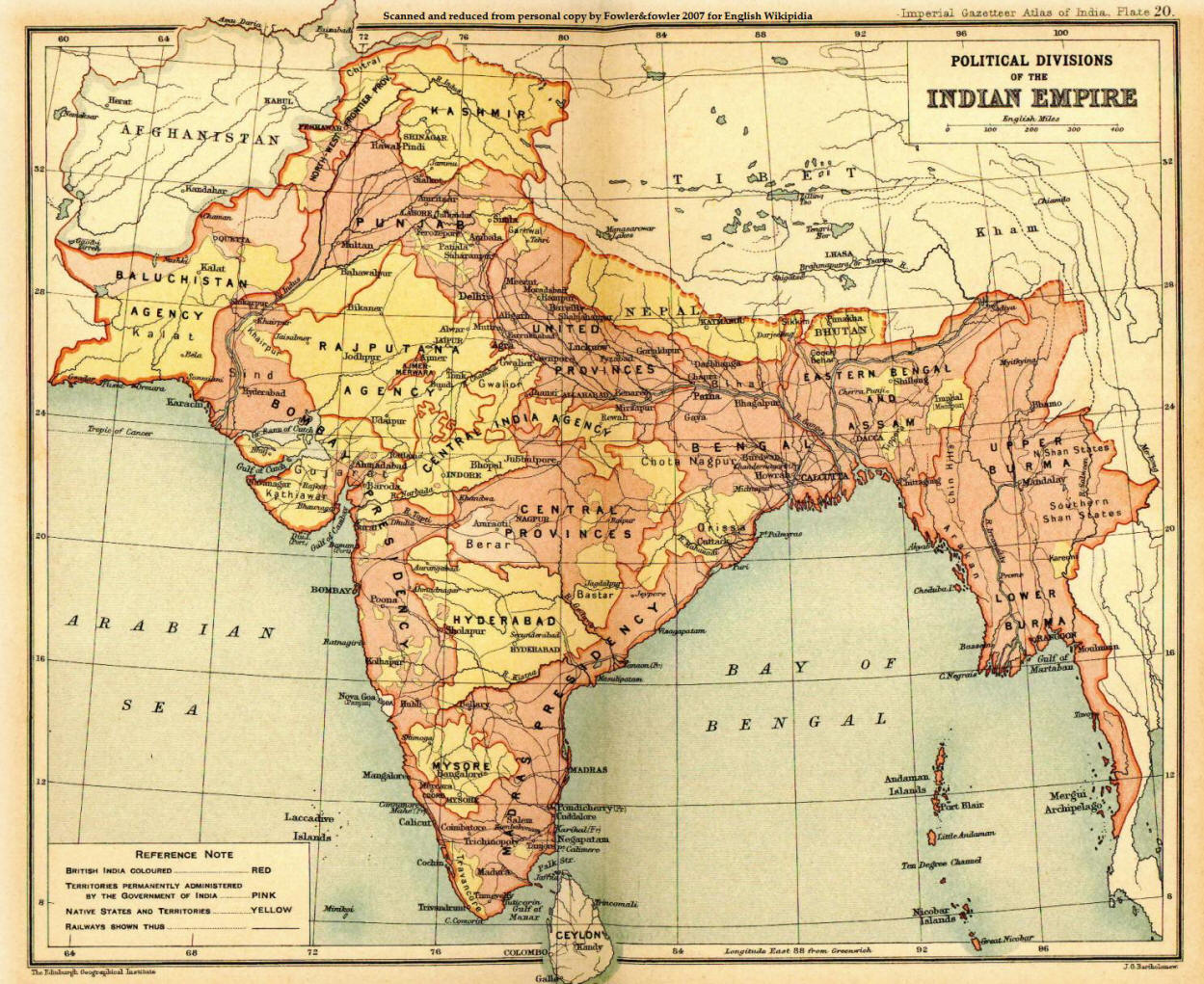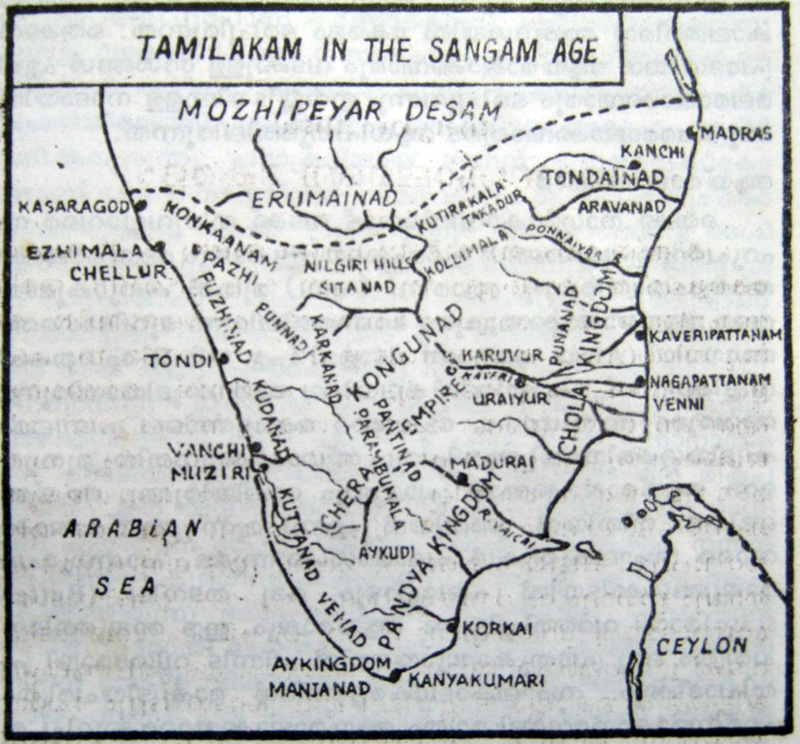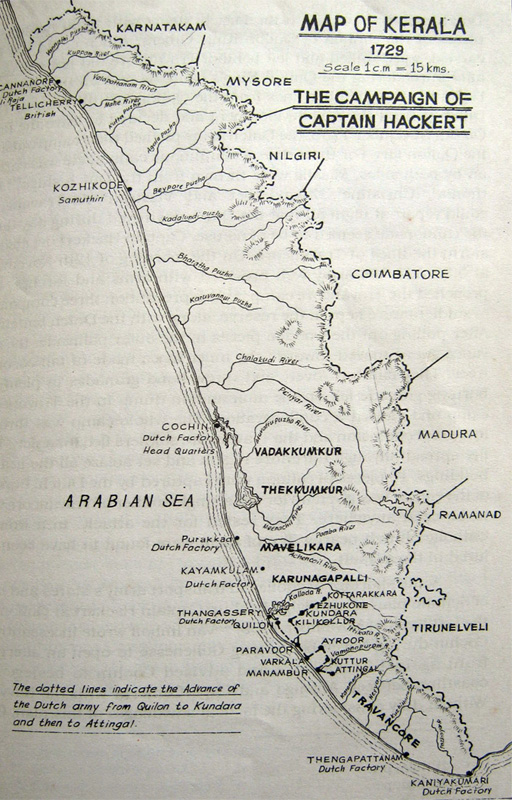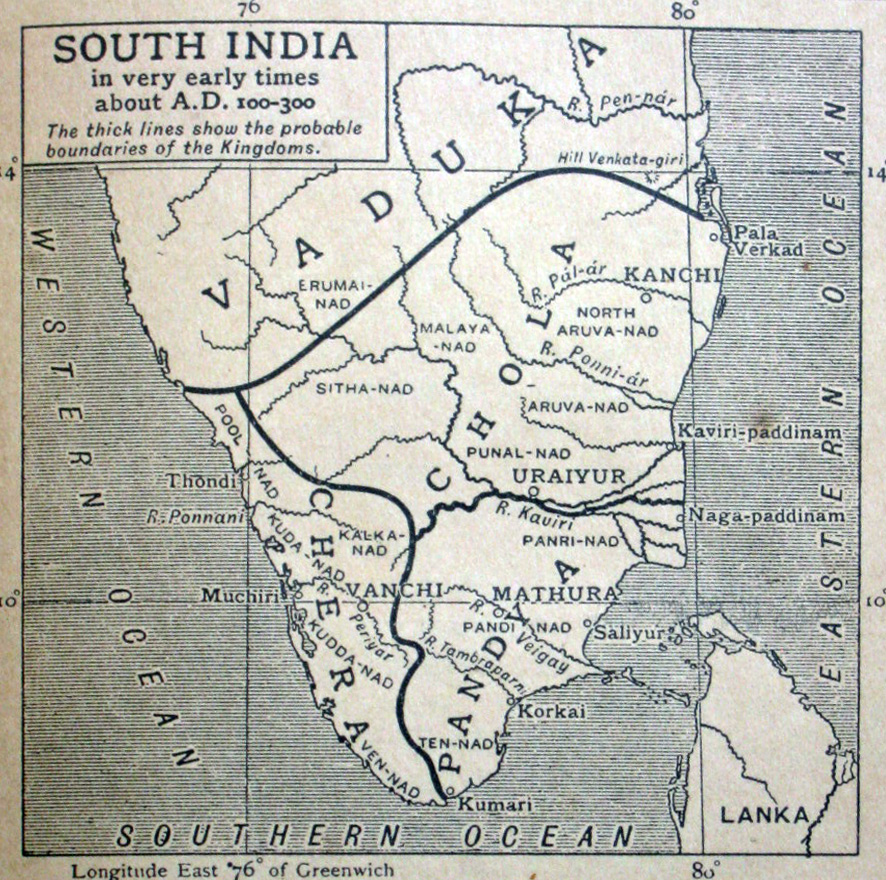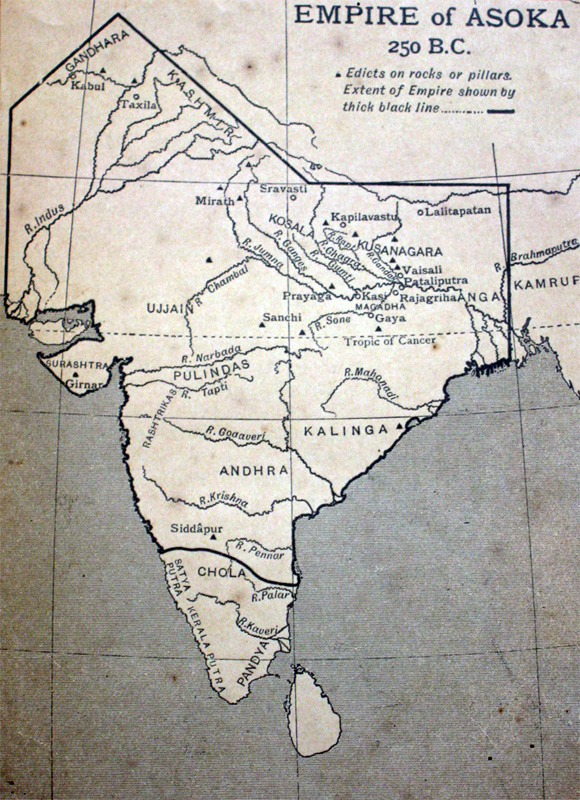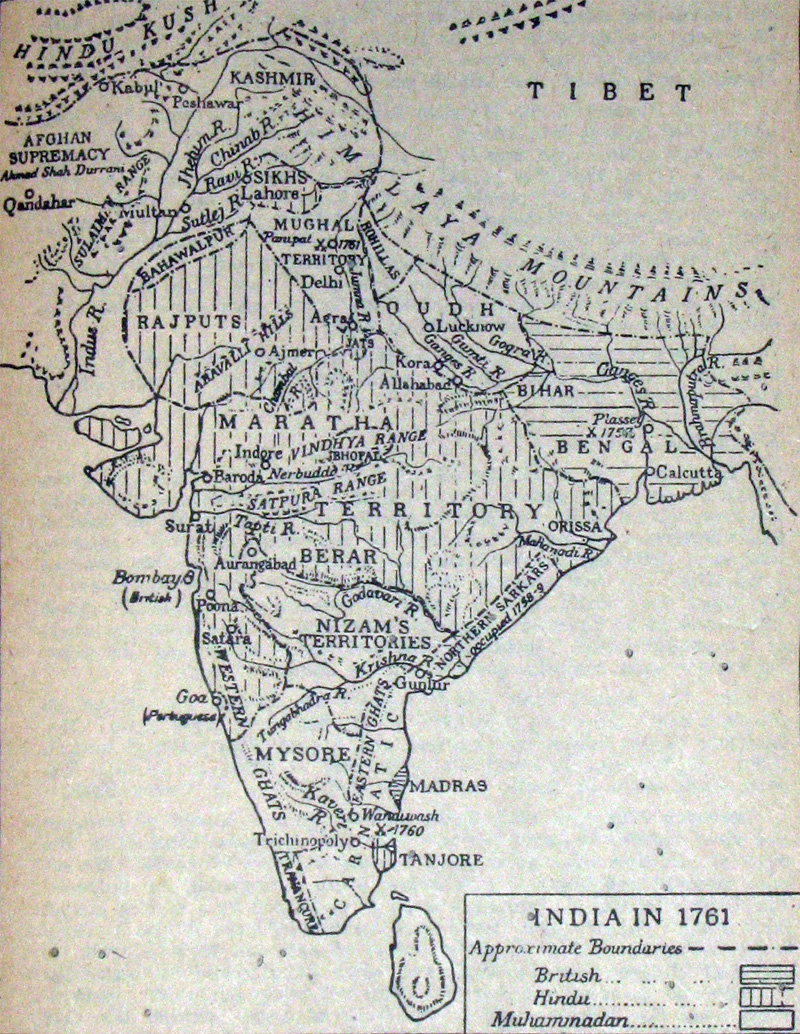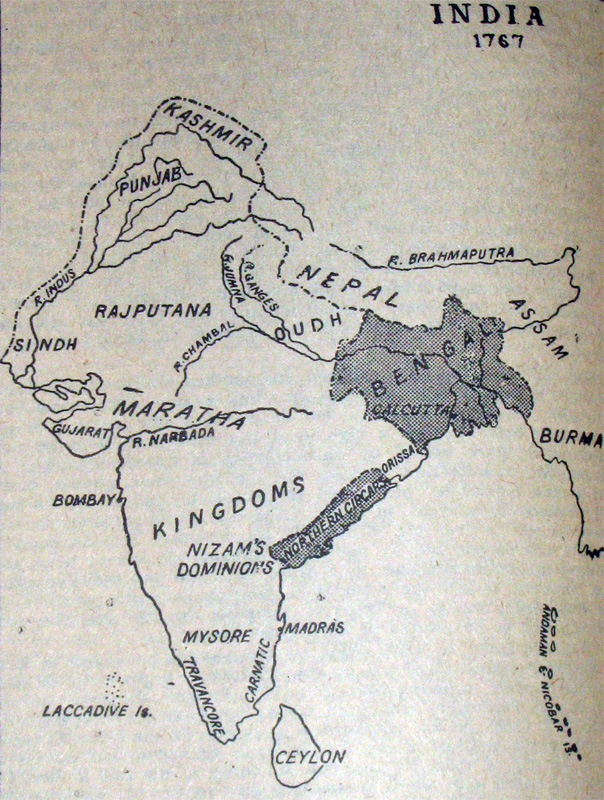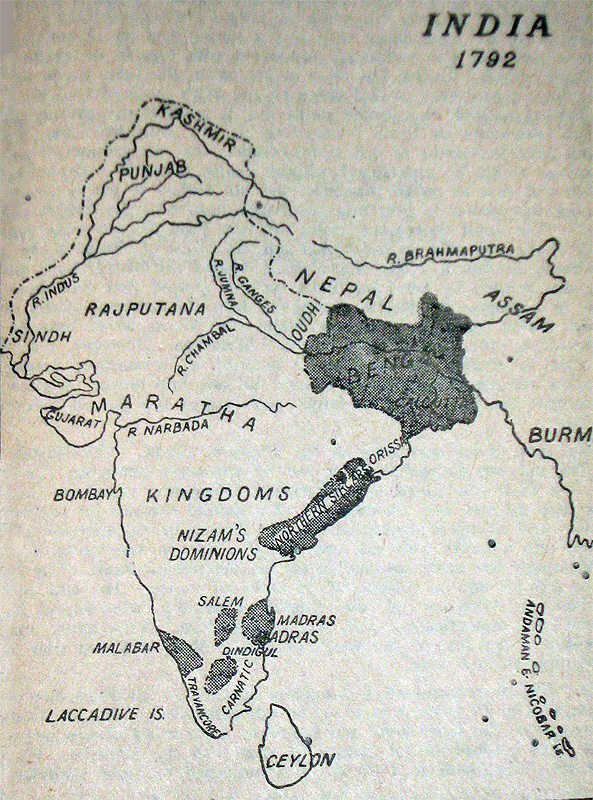Kerala: from BC to AD
Three centuries before the beginning of the Christian era, India for the first time faced the forces of the powerful Greek king, Alexander.
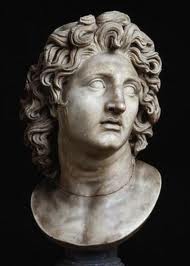
The ambitious Greek ruler, who was a mere twenty when he donned the crown as the ruler of Macedonia, attacked the north western region of the Indian subcontinent in 337 BC. His father, King Philip had firmly established his control over the Greek territories and achieved success over King Darius of Persia. Alexander continued the march eastwards beyond the Hindu Kush mountains to conquer distant lands and thus reached India. The Greek armies reached the Indus where the forces faced little or no resistance from the Hindu King Ambi’s forces. King Porus put up stiff resistance in the region lying between the Jhelum and Chenab rivers. The thirty thousand strong forces and accompanying support were easily trounced by Alexander. He was impressed by the prowess and dignity of Porus and therefore returned his land, while the Greek army moved on. Alexander’s army was unwilling to proceed into the heartland of the continent, thus compelling Alexander to retreat with his men. After entrusting the territories captured thus far to his generals like Seleukos Nikator, Alexander retraced his steps to his home country in 325 BC.
En route to his homeland the young Greek died bringing to a close his vision of a Greek empire that extended from Europe to the Indian subcontinent. His territories were parcelled off by his own army chiefs. Ptolemy received Egypt and administered from Alexandria where he secured himself and established a ruling line. Egypt grew into a centre of trade, seat of learning in philosophy and scientific knowledge.
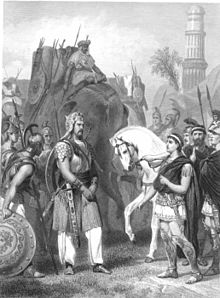
Seleukos Nikator received the lands conquered by Alexander – North western India, Persia, Mesopotamia and Asia Minor. His rise faced threat from the Mauryan Empire which was on the ascent under Chandragupta Maurya. Of the sixteen kingdoms that emerged in the Indo-Gangetic plains, the prominent ones were, Kosala which was powerful since Gautama Buddha’s times, Magadha, Avanti, and Vatsa. Chandragupta I established a fairly large empire in 325 BC. There are contradictory views about the Greek invader meeting the Maurya ruler. Some vouch that they did meet, but some others say they did not!
Chandragupta I had the support of the sharp chronicler of the Arthasastra, Kautilya (also known as Vishnugupta and Chanakya). It was the coming together of the shrewd and sharp intellect of the two - King Chandragupta I and Kautilya – that led to the displacing of the Nanda ruler from the throne in Magadha. Chandragupta established his supremacy over Magadha and set up his capital in Pataliputra from where he set out to control the neighbouring territories. In a short span of time the Maurya ruler was able to extend his supremacy over lands stretching from the Himalayas in the North to the Vindhya ranges to the south and from the Indus to the Brahmaputra in the East. Seleukos Nikator, Alexander’s general, returned to capture the lost glory but achieved no success. He finally had to conclude a treaty with the Maurya and recognise the supremacy of the local ruler. On a personal level he also gave his daughter in marriage to Chandragupta and sent Megasthanes over to the court. Megasthanes’ account of the country during this period is brought to us through his treatise Indica. The chronicle mentions about ‘Kerala’ in his writings. Kautilya in his 'Arthashastra' also speaks of the aromatic herbs, spices and the pearls of Kerala. In the last years of his reign, Chandragupta Maurya renounced his throne, embraced Jainism, and travelled to the south to settle in Sravenabelagola near Mysore. It was there that he breathed his last in 298 BC. He was succeeded by his son Bindusara who reigned over the Maurya kingdom from 298 -273 BC. His son, Ashoka, reigned successfully and left his imprint on the country’s history with his administrative measures as well as his pacifist policies.
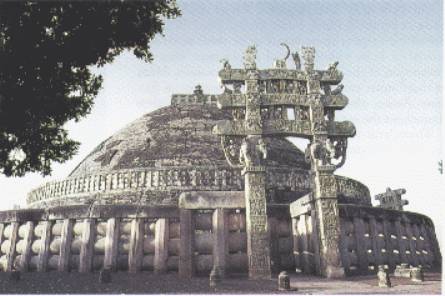
Ashoka, the Great and Kerala (273 BC – 237 BC)
Ashoka’s reign followed an unusual pattern. Beginning his reign as an ambitious king keen to spread his empire, he was aggressive like any other sovereign.
The Kalinga War which he fought was a life altering event. When the Emperor realised the immense suffering and damage to human lives as a result of the war, he was burdened with guilt and thus renounced war. It was the first time in history that a king had adopted pacificism as the guiding force of his foreign policy. The Emperor embraced Buddhism, sent ambassadors to far off lands to spread the message of the Enlightened One, Gautama Buddha. Syria, Egypt, Macedonia and Central Asia were some lands his people travelled to spread Buddhism. Closer home, he sent his son Mahendra and daughter Sanghamitra to Sri Lanka. He adopted the name ‘Devanampriya’ and worked to spread his charity towards men and animals alike, set up hospitals and dispensaries for both.
Ashoka put up edicts which had inscribed on them principles of ethics, equanimity, purity, gratitude, piety, empathy, charity and truth. ‘Kerala’ finds mention in the Ashokan Edicts XII and XIII where reference is made about the ruler of the region as ‘Keralaputran’. That Kerala lay on the fringes of the Ashokan Empire is clear in this Edict.
New States of South India
The north-western areas of the country fell in the hands of the Sakas who entered the subcontinent after having been overpowered by the Indo-Greeks and come via the Bolan Pass in the Afghan region, the Scytho-Parthians, and finally the Kushans who came down from the regions lying to the north-west of China. Each one of these ruled different parts of the erstwhile Mauryan Empire in the following years securing a place in the history of the period. The attention of the world at this time was focussed on the events of the Roman republic, its birth, growth and the reigns of its remarkable emperors. Concurrently, in the Deccan region of India, bordering to the south of the Satavahana kingdom, rose three kingdoms: Cholas in the Thanjavur region of Tamilnadu, Pandyas with Madurai as the seat of power, and the Chera kingdom in Kerala. The three kingdoms came to be known as ‘Tamizhakam’. The primary source of information on Kerala during this period is drawn from the Sangam literature of the period. The ambiguity about determining the Sangam era, whether it was towards the close of ante Christ or after the Christ, remains unsettled.
Greek historian Herodotus (484 BC - 413 BC) mentions about the monopoly of the Egyptians and the Phoenicians in the field of aromatic spices and herbs and it has to be surmised that the country of origin of the spices was indeed India. Till the 15th century, Kerala dominated the production of pepper which earned the name ‘black gold’.
Pliny and Ptolemy on Kerala
The Periplus of the Erythraean Sea by an unknown author is a major work that throws light on early history and it is here that Kerala finds mention first around 1st century AD. The work furnished details about Kerala’s ports and its trading activities. The first ever informative encyclopaedia by Pliny, the Elder, mentions all these related activities of Kerala during the same period as does another Greek mathematician, astronomer, geographer and scientist, Ptolemy. He lived between 95 and 162 AD. Another Greek contemporary who lived between 40 and 90 AD mentions of cardamom, cinnamon, ginger and turmeric and its benefits in his work Materia Medica.
Pliny, Ptolemy and the unknown author of Periplus speak about the ports of Kerala through which all trading activities took place. Muziris, Tindis, Baracca, Nelkinda were the important ports. Historians are not yet in unanimous agreement about the location of these ports. However, Muziris, the present day Kodungallur, is more or less a confirmed fact. The Sangam literature does mention Muziris, but to locate the present day counterparts of the ports may not be an easy task because the land forms and coastline would have undergone plenty of change over the centuries and therefore locating these would be difficult. Accounts of travellers and explorers who came later are useful to piece together information.
The discovery of the monsoon winds in the Indian Ocean region by Hippalus, the Egyptian mariner, in 45 AD. proved a blessing for the trading communities. It increased trade traffic between India and the West. It also facilitated voyage between Ollilice in Athens to Muziris in forty days. According to William Logan, it was on the basis of information provided by the Arabs and the Indians regarding the South West Monsoon that Hippalaus identified these winds which helped sail from the Farthak cape to the pepper rich Malabar coast. Pliny is said to secure information regarding the Indian subcontinent from ambassadors from Ceylon who were at the Roman Emperor Claudius’ court.
Kerala was administered by three separate kingdoms – the Ay Vel in the south, the northern end under the Ezhimala kings and the central portion under the Chera kings.
Evolution of Kerala till the 15th Century
The power and influence of the Ay dynasty that reigned over the southern region of Kerala from ancient times had waned by the 10th century AD. Extending from Nagercoil in the south to Thiruvalla in the north a major part of the territory lay in the Western Ghat region (Sahyadris). Ayakudi near Courtallam (now in Tamil Nadu) was the capital. Ptolemy does mention names of certain places in the Ay kingdoms. Certain historians are of the view that the Ays came from Gujarat. Vizhinjam in Thiruvananthapuram district was the headquarters of the Ay and Kanthaloor, the ancient seat of learning, was also flourished there. The family deity was the Sree Padmanabhaswamy worshipped in the Padmanabhaswamy temple, in Thiruvananthapuram (the present state capital).
The northern end of Kerala was under the Ezhimala kings. The coastal region from Vatakara to Mangalore and the hill areas lying to the East of this strip, the highlands to the north of Kannur all fell under Ezhimala territory. Wayanad as well as Coimbatore (Tamilnadu) also came under their territorial control.
As for the middle kingdom, it was ruled by the Cheras. There are claims that Athalavanchi, Thondi and Karur principalities had also established themselves in the region.
Sangam literature provides the above information, and it would not be wrong to state the early centuries of the Christian era are shrouded in darkness, as far as Kerala’s history is concerned.
The Ay kingdom touched its low with the attack of the Cholas. Vizhinjam and Kanthaloorsla were taken over by the Cholas. The northern territories became part of the Chera kingdom and were absorbed into Venad. Chera power was revived yet again in 800 AD. Historians are however reluctant to label this as the second Chola Empire, they prefer to refer to this line of rulers as the ‘Kulasekharas of Mahodayapuram’. Mahodayapuram is also known as Thiruvanchikulam. It was from this capital that Kulasekhara rulers reigned supreme over Kerala between 800 AD and 1102 AD. This was the first occasion when the whole region came under the consolidated rule of one dynasty.
The long period of war with the Chola and Chera powers started dipping and last Chera king Rama Varma reached Kollam to lead the Chera forces. It was only after this change that the Cholas finally withdrew from the region, and Kollam became the capital of the Kulasekhara territories. With the fall of Kulasekharas, Venad regained its independent status.
With the decline of the Kulasekharas, the unified status of Kerala was again under threat. By the 12th century, small kingdoms emerged and the most prominent among them was the Venad kingdom in the south, the Kolathunad (the land of the Kolathiri) in the north, Kochi or the Perumpaddappu swarupam in the centre and the Zamorin’s territoty lying between Kolathunad and Kochi. The Zamorin was the most powerful among these kings. Nature had gifted the geography of the region with numerous ports, thus opening up trading opportunities which brought in commercial gains as well as the desire to extend territorial supremacy over larger areas.
An event that took place in the 15th century Europe had a telling effect on the future of Kerala, Turkey’s attack on Constantinople affected the trade of spices from India via the land route to Europe. European rulers granted support to explorers and navigators to discover a new route to India from the sea, thus the Malabar Coast became the landing point of the Portuguese seafarer Vasco da Gama, in May 1498.
